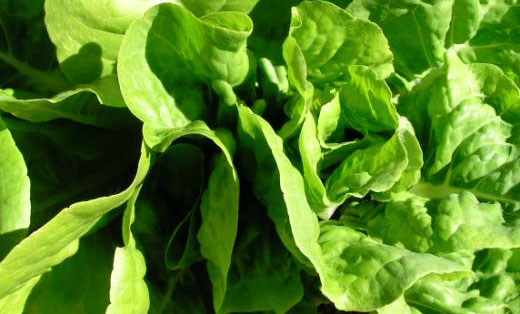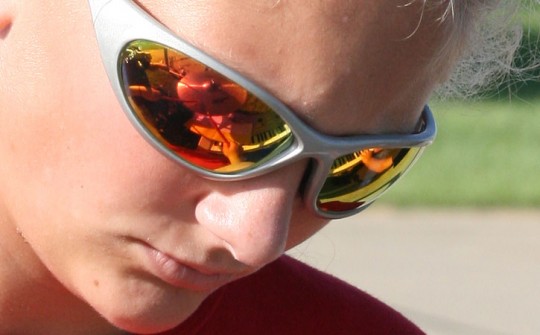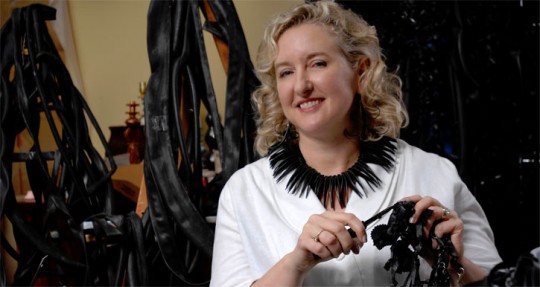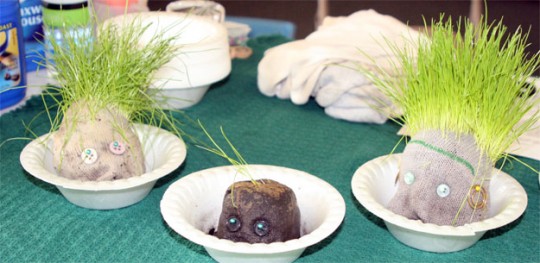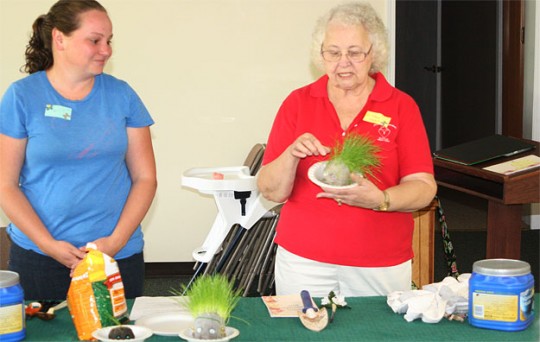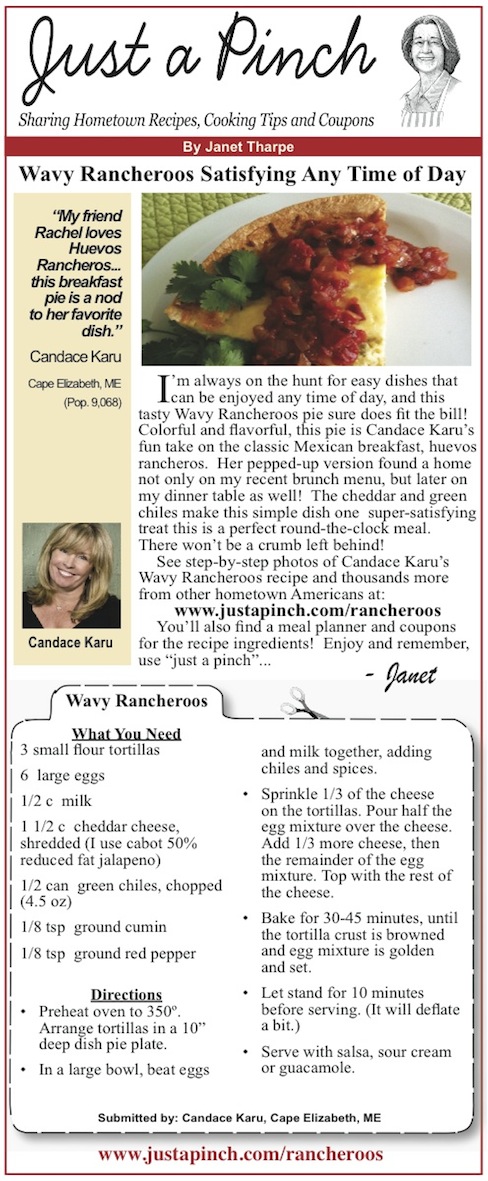Fall Veggies Are Cool To Grow In North Escambia Area
August 14, 2010
In Northwest Florida, vegetable lovers can enjoy harvests from their backyard gardens throughout the year. However, to ensure a productive and enjoyable vegetable garden, you must understand and abide by planting times.
 In general, vegetable crops can be grouped into warm-season and cool-season varieties. Warm-season crops do not grow well at temperatures below 50 degrees F and are killed by frost. Cool-season crops are those that grow at lower temperatures, are not injured by light frost, but can’t take the heat.
In general, vegetable crops can be grouped into warm-season and cool-season varieties. Warm-season crops do not grow well at temperatures below 50 degrees F and are killed by frost. Cool-season crops are those that grow at lower temperatures, are not injured by light frost, but can’t take the heat.
In late summer and early fall, North Florida gardeners experience a unique opportunity. You can still plant another round of warm-season crops and/or start your cool-season vegetables.
Planting of warm-season vegetables gets to be more critical with the fall garden because we have an end point—frost and freezes. When planted too late, plants will grow, but may not provide enough of a harvest to make the effort worthwhile. Examples are peppers, eggplants and tomatoes. These vegetables can easily take up to two months from transplanting to producing the first fruit. All the time, the fall is getting shorter in day length and cooler in temperatures. That’s really tough on “warm-loving,” full-sun plants.
Since timing is so important with the fall crop, choose warm-season crops that will produce well within a short time. Look for fast-maturing and determinant or bush-type cultivars to ensure a good yield before frost.
Crops to plant outdoors in August include bush and lima beans, cauliflower, collards, cucumbers, onions, southern peas, peppers, squash, tomato and turnips.
In September, you can set out beets, broccoli, cabbage, carrots, endive, kale, kohlrabi, mustard and radish.
The cooler temperatures of October are better for planting Chinese cabbage, lettuce and spinach.
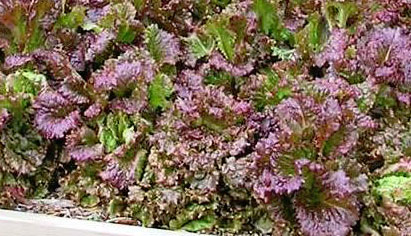 To find specific recommendations on when to plant vegetables in Florida, read the UF/IFAS “Vegetable Gardening Guide”. It’s online at edis.ifas.ufl.edu/vh021
To find specific recommendations on when to plant vegetables in Florida, read the UF/IFAS “Vegetable Gardening Guide”. It’s online at edis.ifas.ufl.edu/vh021
The leafy crops excel in the fall. Some of the more popular leafy crops are Swiss chard, collards, spinach, mustard, turnip greens and lettuce. Endive, escarole, kale, arugula and the greens of mesclun mix also do very well during the cooler months.
Garden lettuces can be divided into three classes based on habit of growth – leaf or loose-leaf types, semi-heading types (such as butterhead and romaine) and heading or crisp-head types.
Crisp-head lettuces, such as the iceberg types available in supermarkets, are more of a challenge to grow here, so its recommend you stay with the leaf and semi-heading varieties. Other than generally avoiding the heading types, feel free to try just about any variety that strikes your fancy.
Leaf lettuces are the most decorative and least-demanding. They also are among the most heat-tolerant lettuces. This type of lettuce grows in a loose rosette of foliage, and the leaves can be smooth or crinkled, pointed, lobed, curled or ruffled. Foliage color runs from deep ruby red to dark green to pale greenish yellow, with just about every combination in between.
Collards will withstand wide ranges of temperatures if properly conditioned. They may be direct seeded and or plants can be transplanted. Collards may be harvested by cutting the whole plant or by “cropping” individual leaves.
Onions are generally grown from sets or plants. Sets and plants will require about six to eight weeks to reach eating size. Bulbing onions will not be ready to harvest until spring.
Radishes are fast growers and fun for the kids. Many are ready to harvest 25 to 30 days after planting.
So take the leap and “fall” into vegetable gardening.
Theresa Friday is the Residential Horticulture Extension Agent for Santa Rosa County
We’ve Got The Beat: Northview Band Summer Practice Photo Gallery
August 13, 2010
 The Northview High School Tribal Beat band is wrapping up summer practice this week.
The Northview High School Tribal Beat band is wrapping up summer practice this week.
Band director Scott Slay said the band is preparing a Beatles halftime show for this year’s football season plus several rock songs to perform from the stands.
For a photo gallery from Thursday morning’s Northview Tribal Beat practice, click here.
NorthEscambia.com photos, click to enlarge.
Local Woman’s Jewelry Featured On Vogue Magazine Cover
August 13, 2010
 It really sounds like an unlikely combination. An Atmore woman, handmade jewelry, a Vogue magazine cover and rubber bicycle inner tubes. But add it all together, and you have a high fashion success story.
It really sounds like an unlikely combination. An Atmore woman, handmade jewelry, a Vogue magazine cover and rubber bicycle inner tubes. But add it all together, and you have a high fashion success story.
The August cover of Italian Vogue magazine features recycled rubber jewelry handcrafted in Atmore by Kathleen Nowak Tucci. Tucci has been creating art for 25 years and has recently begun working with recycled bicycle inner tubes. Kathleen has shown her work in private, corporate, and university collections nationally and internationally. Her latest interest in recycled rubber has landed her in some of the most exclusive boutiques across the country.
Tucci, whose recent artistic accomplishments includes a successful line of one-of-a-kind lamps, said she was intrigued with rubber. She tried creating art from industrial gaskets, but that “was a total flop”, she said. But then her artist’s eye took a long look at the seemingly unlikely rubber bicycle inner tube.
“It was an interesting material to play with,” Tucci said. “As a material, I was totally drawn to it.”
“Art deco style, swirls and curves…I’ve always love them,” she said of her jewelry’s design.
 And thanks to the marketing eye of her sister, Margaret Nowak Dobos, the high fashion world was drawn to her creations. Dobos lives in Orange County California and serves as the marketing representative, distributor, photographer and stylist for Kathleen’s accessories.
And thanks to the marketing eye of her sister, Margaret Nowak Dobos, the high fashion world was drawn to her creations. Dobos lives in Orange County California and serves as the marketing representative, distributor, photographer and stylist for Kathleen’s accessories.
“It’s unbelievable to be sold in Beverly Hills,” she said.
It’s only been six months since inner tubes were first recycled by Tucci from trash to fashion treasure on the website mysistersart.com. Italian Vogue found the website and contacted the sisters in June to say they were looking for rubbery jewelry for a photography shoot. They shipped Tucci’s jewelry to New York City. They knew it was used in the magazine photoshoot, but they also knew the odds were very slim that the jewelry photos were ever make the printed magazine.
“It was an honor just to know that Steven Meisel took the photos,” Tucci said. “He’s one of the world’s best known photographers.” Meisel, without a doubt, has an eye for fashion — he’s credited with discovering or promoting the careers of models like Linda Evangelista, Naomi Cambell and Christy Turlington, as well as taking rather famous photos of his friend Madonna.
 Then Tucci visited the Italian Vogue website to see the preview of the August magazine. There, on the cover, she found her jewelry.
Then Tucci visited the Italian Vogue website to see the preview of the August magazine. There, on the cover, she found her jewelry.
“It was amazing,” she said.
Tucci and her sister Annie Nowak, owner of Annie’s Community Cup, looked at cover image appear on the Vogue website over and over.
“I never aspired to this,” Tucci said. “It is beyond my wildest dreams.”
Pictured top: Kathleen Nowak Tucci at work on her bicycle inner tube jewelry, courtesy Ben Twingley. Pictured top inset: The August cover of Italian Vogue magazine, courtesy Vogue. Pictured middle and bottom inset, bottom of page: Tucci’s jewelry, as photographed by her sister Margaret Nowak Dobos.
Back To School Orientations Next Thursday, Friday
August 11, 2010
New and incoming student orientations will be held next Thursday and Friday at North Escambia schools.
Orientations will be held as follows:
- Bratt Elementary: Thursday, August 19 from 9-10 a.m. for Pre-K; Friday, August 20 from 8-10 a.m. for K-5
- Jim Allen Elementary: Friday, August 20, 9-10:30 a.m. for all grades
- Molino Park Elementary: Thursday, August 19 from 9:30-10:30 Pre-K; Friday, August 20, 9-9:30 a.m. for K-2 and Friday, August 20, 9:30-10 a.m. for 3-5
- Ernest Ward Middle School: August 19, 10 a.m.-11:30 a.m. for new and incoming students
- Ransom Middle School: August 19, 10 a.m.-11:30 a.m. for new and incoming students
- Northview High School: Orientation for ninth grade and new students will be Thursday, August 19 at 8:30 a.m.
- Tate High School: Orientation for ninth grade and new students will be Thursday, August 19 at 8:30 a.m.
Molino Homemakers Club Create ‘Hairy Heads’ Craft
August 8, 2010
The Molino Homemakers club had a demonstration on making “Hairy Heads” at a recent meeting.
 Nancy Holland gathered up her husband’s old socks, string, rubber bands, Styrofoam bowls, a few grass seeds, potting soil and water. Then she along with April Glass proceeded to demonstrate to the club members how to make a “Hairy Head”.
Nancy Holland gathered up her husband’s old socks, string, rubber bands, Styrofoam bowls, a few grass seeds, potting soil and water. Then she along with April Glass proceeded to demonstrate to the club members how to make a “Hairy Head”.
First you will need to cut off the top of the sock if it has elastic on it which makes it easier to put the soil in. Place a couple of tablespoons of grass seed in toe of the sock. Fill with soil about 6 inches deep. (Depending on the size of the sock) Tie top of sock tightly with string or rubber band. Hold over the bowl and pour water over sock soaking it well. Hold up a few inches and let excess water drip off. Cut off excess sock just above the string or rubber band. Place upside down in the bowl. String will be on the bottom, seeds on top. Shape like a head flattening the bottom sort of like a chin. Put buttons in with pins for eyes, or eyes and nose if you have three buttons. Place in a sunny window. “It is very important to keep the sock moist until it sprouts,” said Holland. Cover with plastic wrap for faster sprouting. Without wrap mist often and cut hair when Hairy needs a haircut. “Why would you want to do this?” asks Holland, “Because you need to be silly once in a while.”
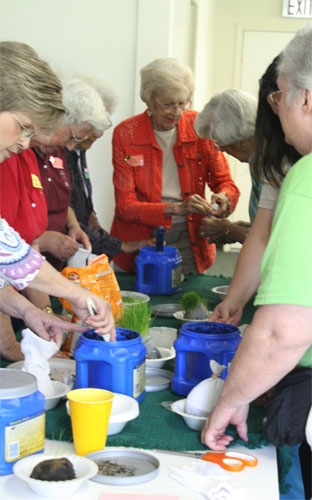 Barbara Hendrix gave an interesting devotion on cicadas insects like Katydid’s and Honeybees. Saying, “Katydids appear every 17 years or so creating an almost constant noise at an extremely disruptive level, then, they quickly disappear. Honeybees are just the opposite. Their hives exist for years. They make an effort everyday to live in harmony with one another pollinating plants and flowers that furnish fruit and vegetables that provide for our daily nourishment. Without those gifts our loss would be great.” She left us considering whether we are disruptive or doing the work we are called to do.
Barbara Hendrix gave an interesting devotion on cicadas insects like Katydid’s and Honeybees. Saying, “Katydids appear every 17 years or so creating an almost constant noise at an extremely disruptive level, then, they quickly disappear. Honeybees are just the opposite. Their hives exist for years. They make an effort everyday to live in harmony with one another pollinating plants and flowers that furnish fruit and vegetables that provide for our daily nourishment. Without those gifts our loss would be great.” She left us considering whether we are disruptive or doing the work we are called to do.
The Molino Homemakers toured Camp Five Road Prison in Cantonment in place of their regular June meeting.
The Molino Homemakers meet at 10 a.m. on the first Wednesday of each month, excluding July, in the fellowship hall of Molino First Assembly of God Church. Visitors are welcome.
Pictured top: Molino Homemakers Club “Hairy Heads”. Pictured inset: The ladies of the Molino Homemakers Club work on a project. Pictured below: April Glass and Nancy Holland demonstrate the project. Submitted photos by Terri Brown for NorthEscambia.com, click to enlarge.
Century Blackcats 1977-1987 To Hold Reunion
August 8, 2010
The Century High School classes of 1977-1987 will hold a combined reunion on August 20-21.
The event begins with a meet and greet, and registration, at 7:30 Friday night at the Century Community Center (Ag Building) on West Highway 4. The reunion banquet will take place on Saturday, August 21 beginning at 3:30 p.m.
The fee is $25 per person, including food and drinks. For more information, contact Terrie (Anderson) Abernathy at (850) 221-4229, Johnny Findley at (251) 727-0690 or Sharron (Peebles Jones) Bell at (404) 949-6403. Visit the reunion Facebook page at www.facebook.com/CenturyHighSchoolClassReunion.
Featured Recipe: Cumin Grilled Pork Chops
August 8, 2010
This weekend’s featured recipe from Janet Tharpe is Cumin Grilled Pork Chops. A cumin-fueled marinade is the star of this fast and easy dish. Not only does it add a distinctive smokiness to the pork, it also does wonders sealing in the chops’ natural moisture.
To print today’s “Just a Pinch” recipe column, you can click the image below to load a printable pdf with a recipe card.
Now Is Time To Get Ready For That Fall Garden
August 7, 2010
This year, many gardeners celebrated spring by planting a vegetable garden and were rewarded with a bountiful harvest. Others were disappointed with a smaller than expected harvest and too many problems to count. Both groups of gardeners should rejoice! The hot weather may not indicate it, but it’s time to begin a fall vegetable garden.
 But before we enjoy a fall harvest, there’s work to be done preparing the fall vegetable garden. Gardeners must take action now–drastic action. Some of those plants that have been nurtured from “babies” in the spring to monsters now must be pulled out. It is recommended that most plants, but especially weeds, be removed. Leave the okra, cherry tomatoes and beans if the foliage is healthy and they are still producing.
But before we enjoy a fall harvest, there’s work to be done preparing the fall vegetable garden. Gardeners must take action now–drastic action. Some of those plants that have been nurtured from “babies” in the spring to monsters now must be pulled out. It is recommended that most plants, but especially weeds, be removed. Leave the okra, cherry tomatoes and beans if the foliage is healthy and they are still producing.
Large-fruited tomatoes may have some small ones still hanging on, but, unless you have at least 10-20 good-sized fruit, pull them out. The largest, best tomatoes you had this spring were the first ones produced. The tomato plant has gotten old, diseased, and damaged by insects; it will never produce an abundance again. Pull the old plants up and discard them.
The next step is to decide if your garden is in the right location. The major consideration for garden placement is sunlight. All vegetables require some sunlight; the most popular vegetables require full sun. “Full” sun means at least eight hours of intense, direct exposure. If such exposure is not received by crops such as tomatoes, peppers and squash (vegetables that contain seed), the plants grow spindly, they have weak stems, drop blooms and are generally nonproductive.
Some leafy vegetables such as broccoli, collards, spinach, and lettuce tolerate shadier conditions than other vegetables, but if your garden does not receive at least six hours of sunlight daily, you will not be successful growing vegetables.
Another key to a successful harvest is proper soil preparation. In Northwest Florida, most soils are less than perfect for vegetable production. So we must improve our soil through the addition of organic amendments.
Adding liberal amounts of organic matter to all types of garden soils is a highly recommended practice. Compost, rotten grass clippings, or leaves applied to the garden surface two to four inches deep and tilled or worked into the soil, greatly improve sands or clays.
 After adding organic amendments, its best to wait several weeks before planting. Extremely fresh organic material, when introduced to the native soil, causes a rapid increase in the numbers of soil microorganisms. These soil microbes reach tremendous numbers as they help to decompose or break down the organic materials to a more usable form. If young plants or seeds are planted while these microbes are highly active, there is a good chance that they will experience nitrogen deficiency, root rot or seedling blights.
After adding organic amendments, its best to wait several weeks before planting. Extremely fresh organic material, when introduced to the native soil, causes a rapid increase in the numbers of soil microorganisms. These soil microbes reach tremendous numbers as they help to decompose or break down the organic materials to a more usable form. If young plants or seeds are planted while these microbes are highly active, there is a good chance that they will experience nitrogen deficiency, root rot or seedling blights.
A small amount of fertilizer can also be applied during soil preparation. This may be helpful if the organic amendments are too fresh. A little extra nitrogen will help speed up microbial activity.
Some gardeners will also amend the soil with lime during bed preparation. While lime may be necessary in some situations, don’t add it until you’ve had a pH test run by a reliable lab. Too much lime in the soil may be just as bad as too little. A high pH, caused by excessive lime, can cause many problems such as making some nutrients unavailable to plants. So, keep in mind the old adage, “Don’t guess, soil test!”
So, even though the temperatures are unbearable, it’s time to prepare for the fall garden. Stay tuned for future articles on vegetable gardens in Northwest Florida.
Theresa Friday is the Residential Horticulture Extension Agent for Santa Rosa County
Featured Recipe: Wavy Rancheroos
August 1, 2010
This weekend’s featured recipe from Janet Tharpe is Wavy Rancheroos pie. Colorful and flavorful, this pie is a fun take on the classic huevos rancheros Mexican breakfast, but it’s great or lunch or dinner too.
To print today’s “Just a Pinch” recipe column, you can click the image below to load a printable pdf with a recipe card.
Birth: Forester David Bryan
August 1, 2010
 Heath and Shelby Bryan are proud to announce the birth of their son, Forester David Bryan, born July 2, 2010 at Thomas Medical Center.
Heath and Shelby Bryan are proud to announce the birth of their son, Forester David Bryan, born July 2, 2010 at Thomas Medical Center.
Forest weighed eight pounds and was 21 inches long. Grandparents are Ricky and Cheryl Golson, and Terry and Sheila Bryan of Bratt. Great-grandparents are Marlene Forester and the late Curtis Forester, the late Walter Lee Golson and Doris Oline Hopkins, Pansy Bryan and the late Preston Bryan, Dillard and Rochelle Bankston, and the late Billy Macks.


